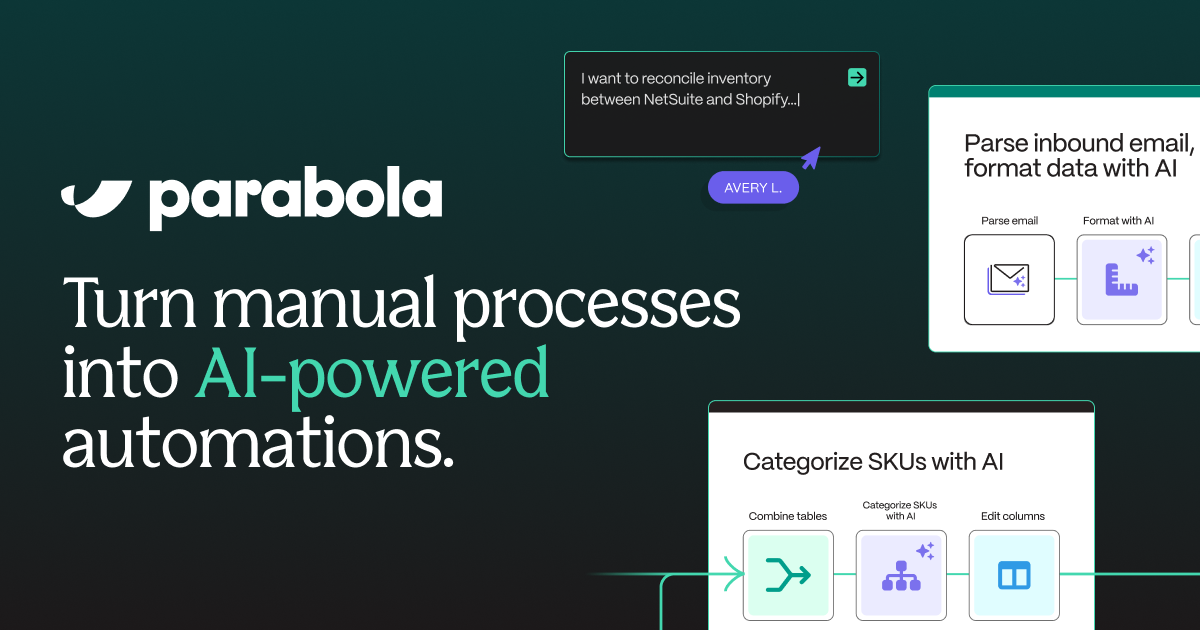Combine and Join Tables From Your PDF Data – Free Template
Combine and join tables from your PDF data without writing a single line of code.

Combine and join tables from your PDF data without writing a single line of code.









Parabola's PDF handling capabilities enable you to extract and transform data from PDF documents efficiently.
Parabola's PDF data extraction functionality enables you to convert PDF documents into structured, analyzable data. The platform can handle various PDF formats and layouts, making it versatile for different business needs.
The Combine tables step in Parabola allows you to merge data sets from different sources based on matching columns. This powerful feature enables you to create comprehensive views of your business data and perform advanced analytics – mirroring the functionality of a vlookup in Excel.
Combine quarterly financial reports stored in separate PDFs into a single comprehensive dataset. This allows for trend analysis and year-over-year comparisons while maintaining data accuracy and consistency.
Merge inventory reports from different warehouse locations stored in PDF format. This creates a centralized view of stock levels and movement across multiple locations.
Combine sales reports from different regions or time periods stored in PDFs to create a unified sales dashboard. This enables better decision-making and performance tracking across the organization.
Working with PDF data doesn't have to be complicated. With Parabola's powerful PDF handling capabilities and table combination features, you can easily transform scattered PDF data into organized, actionable insights. Start building your PDF data Flow today to streamline your data processing workflow.








Request a demo and see how Parabola can automate
your most manual SOPs.